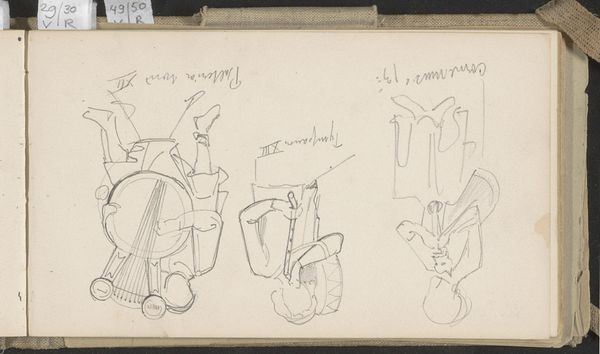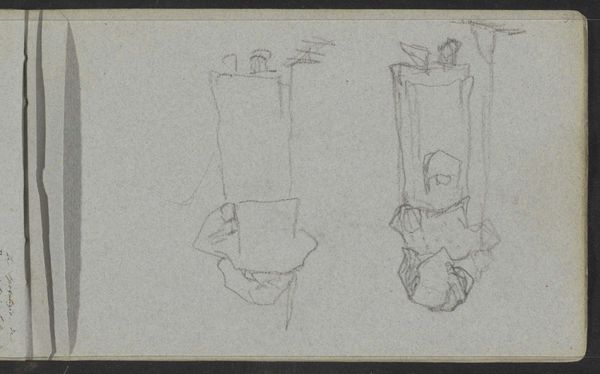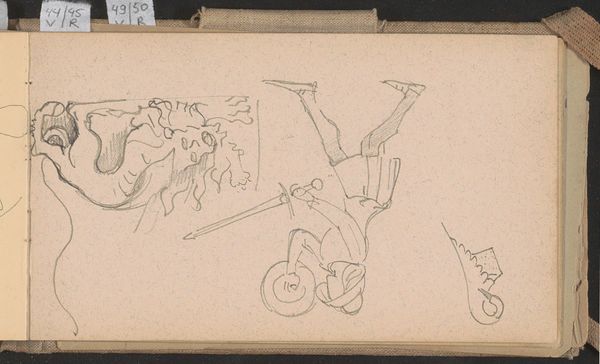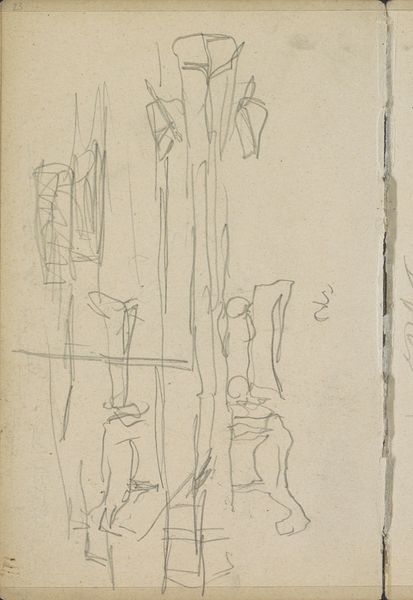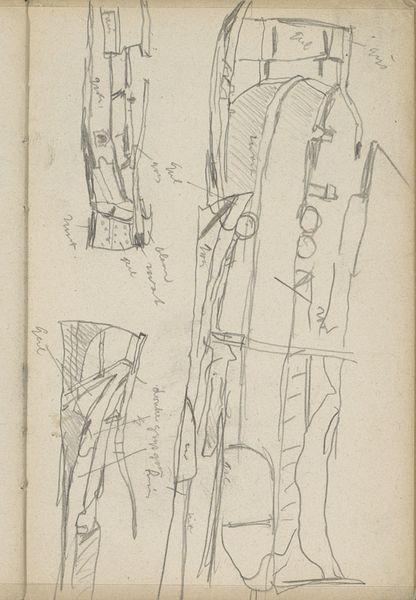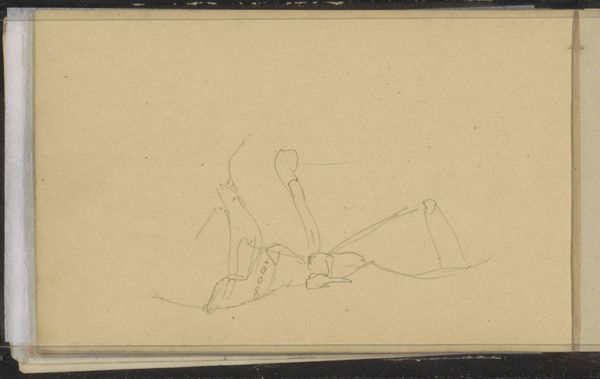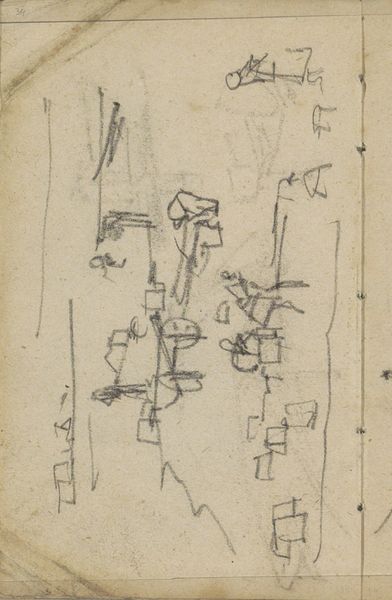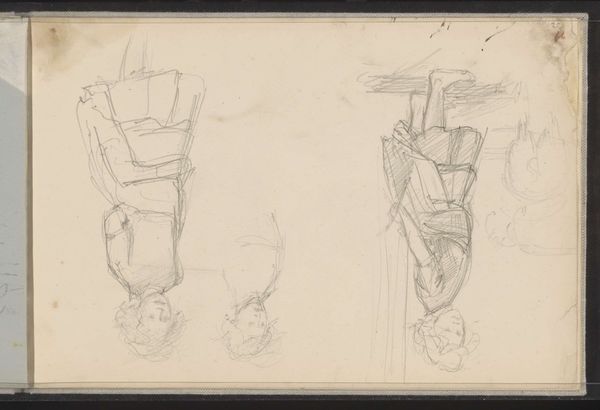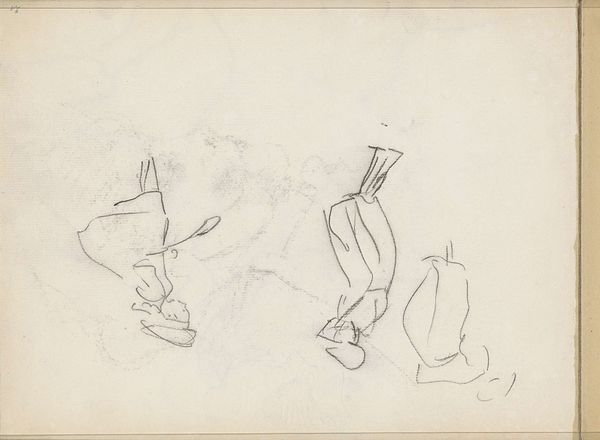
Vier mannelijke muzikanten, naar een voorbeeld uit de dertiende eeuw na Christus 1892 - 1901
0:00
0:00
#
imaginative character sketch
#
toned paper
#
quirky sketch
#
sketch book
#
personal sketchbook
#
idea generation sketch
#
character sketch
#
sketchbook drawing
#
storyboard and sketchbook work
#
sketchbook art
Copyright: Rijks Museum: Open Domain
Curator: This is "Four Male Musicians, after an Example from the Thirteenth Century AD," a sketch by Antoon Derkinderen created between 1892 and 1901. Editor: My initial impression is one of lightheartedness, even whimsy. The loose lines and simple composition create an informal atmosphere, like a quick study. Curator: Indeed, it is likely a page from a sketchbook. Note how the artist renders the figures with economical strokes, focusing on capturing their gestures and postures rather than detailed anatomy. Editor: Right, it does feel very immediate. Derkinderen is referencing the 13th century, I wonder about his choice to revisit that era through a contemporary lens. Was he seeking inspiration from the past to critique or reimagine something about the present? I think we should consider this image in relationship to the art market in the late 19th century. Curator: Your reading of context is valid. From my perspective, Derkinderen employs an almost minimalist approach to depicting the musicians and their instruments. Consider the starkness of line against the muted paper, achieving maximum expression with minimum means. Each figure, delineated by simple contour lines, occupies a distinct visual space, establishing a rhythmic structure. Editor: You are right, it's a great demonstration of the importance of form and line in conveying artistic vision. Also, given that these are musicians modeled after the 13th century, it invites questions about authenticity, cultural memory, and artistic license in the late 19th century. Curator: Agreed. Derkinderen certainly uses line as both descriptive tool and expressive gesture. I will observe, too, that its strength and clarity derive also from their opposition against this very faint textured ground that allows this tonal drawing to pop out to us. Editor: Ultimately, this piece suggests Derkinderen engaged in a fascinating dialogue between past and present. His musicians serve not merely as copies but as reimagined subjects, open to interpretation across different socio-cultural frameworks. Curator: A splendid and fitting summary. The work reveals to us how a great drawing can offer us a world of technical observation as well as critical inquiry.
Comments
No comments
Be the first to comment and join the conversation on the ultimate creative platform.
